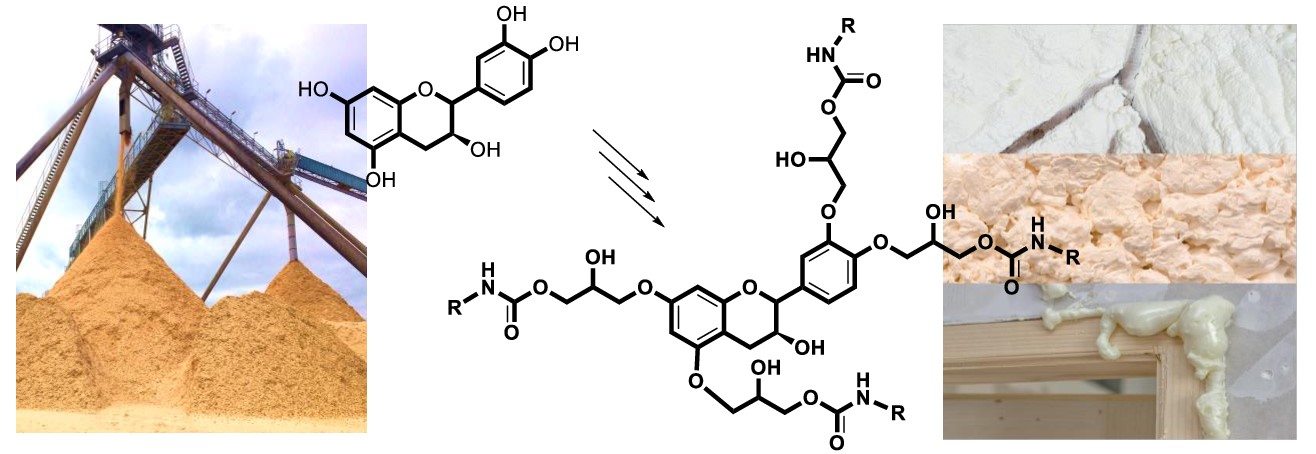 Open Access
Open Access
ARTICLE
Feasibility Study of the Synthesis of Isocyanate-Free Polyurethanes from Catechin
1 Faculté des Sciences et Technologies, Laboratoire d’Etudes et de Recherche sur le Matériau Bois, EA 4370-USC INRAE, Université de Lorraine, Nancy, 54506, France
2 Laboratoire d’Etudes et de Recherche sur le Matériau Bois, EA 4370-USC INRAE, Université de Lorraine, Epinal, 88000, France
* Corresponding Author: Christine Gérardin-Charbonnier. Email:
(This article belongs to the Special Issue: Renewable Foam Materials and Composites)
Journal of Renewable Materials 2022, 10(5), 1175-1184. https://doi.org/10.32604/jrm.2022.016365
Received 01 March 2021; Accepted 26 July 2021; Issue published 22 December 2021
Abstract
With the current trend of increasing efforts to develop non-isocyanate-based polyurethanes (NIPUs), this study aimed to check the feasibility of the development of a method using cyclic carbonate modified catechin and amine to synthesis non-isocyanate urethane with the objective to further extend these results to polyurethane synthesis. The methods used in this study consist of four steps: glycidilation of catechin, hydrolysis of epoxide, cyclic carbonate synthesis, and carbamate synthesis through condensation of butylamine. The resulting products were analyzed using FTIR (Fourier transform infrared) spectroscopy and NMR (nuclear magnetic resonance) spectroscopy. The results showed that carbamate could be successfully obtained through this four-steps synthesis, opening the possibility to further developments for the synthesis of polyurethanes starting from catechin and condensed tannins.Graphic Abstract

Keywords
Cite This Article
 Copyright © 2022 The Author(s). Published by Tech Science Press.
Copyright © 2022 The Author(s). Published by Tech Science Press.This work is licensed under a Creative Commons Attribution 4.0 International License , which permits unrestricted use, distribution, and reproduction in any medium, provided the original work is properly cited.


 Submit a Paper
Submit a Paper Propose a Special lssue
Propose a Special lssue View Full Text
View Full Text Download PDF
Download PDF Downloads
Downloads
 Citation Tools
Citation Tools